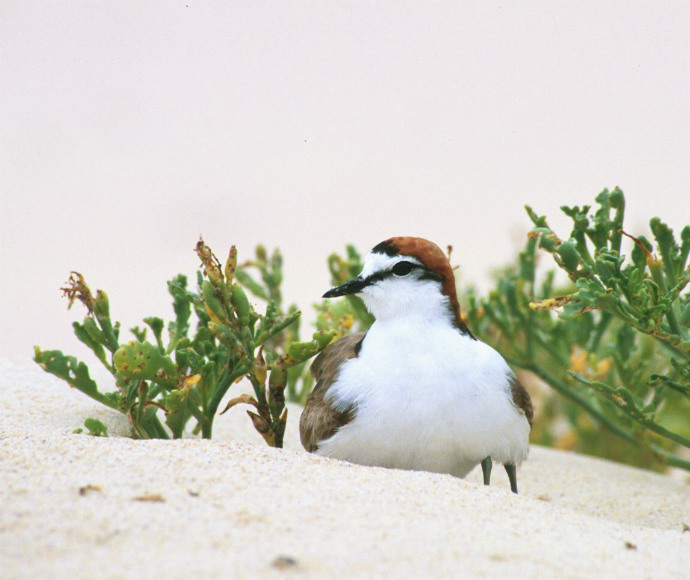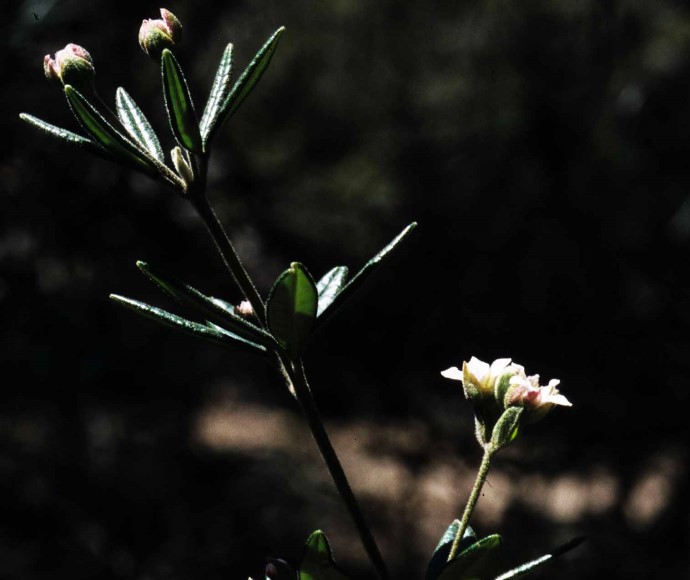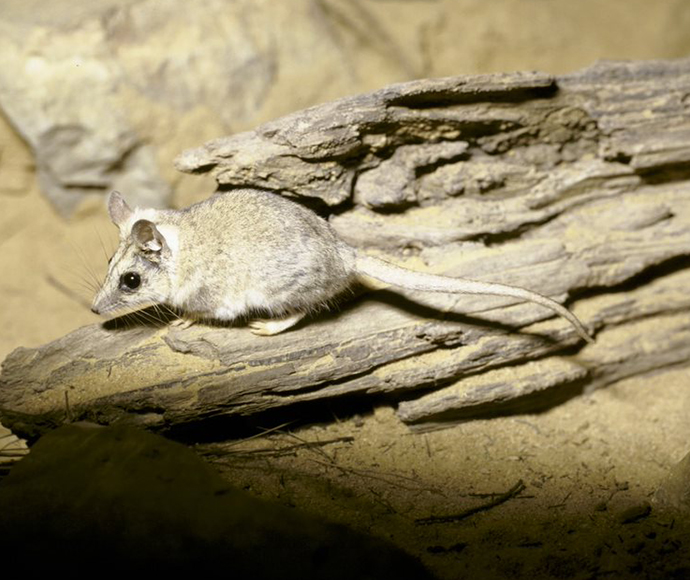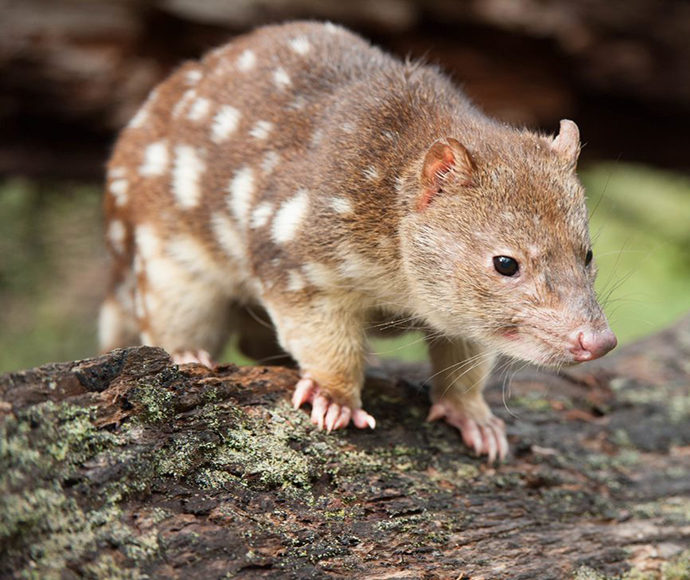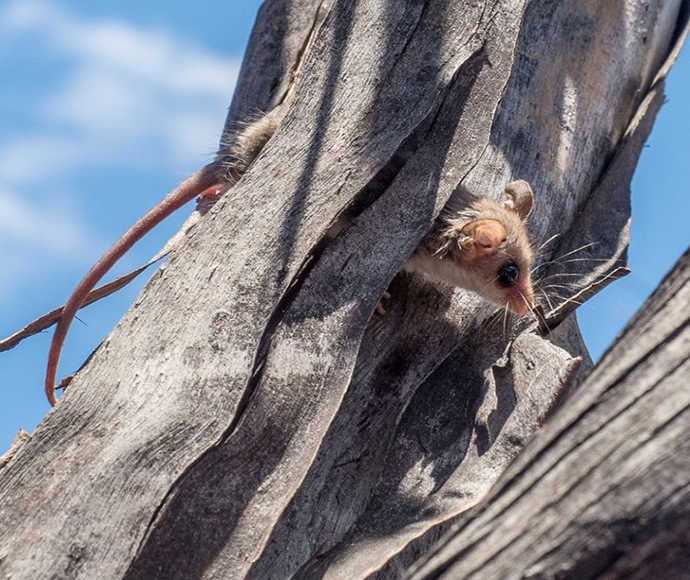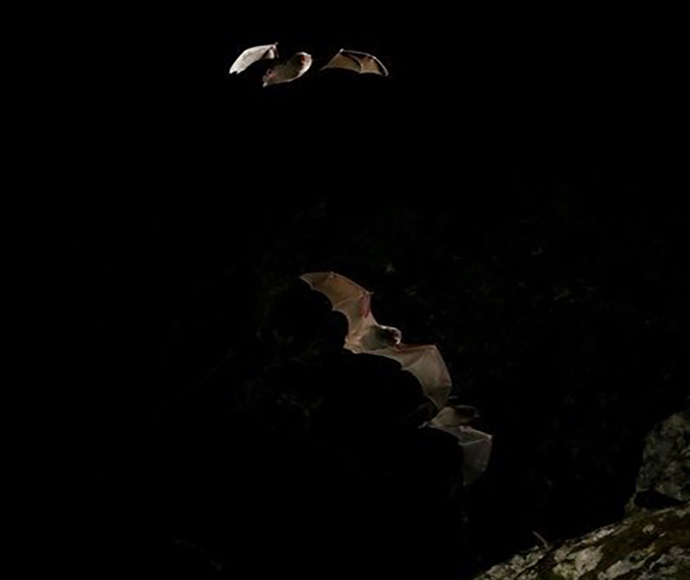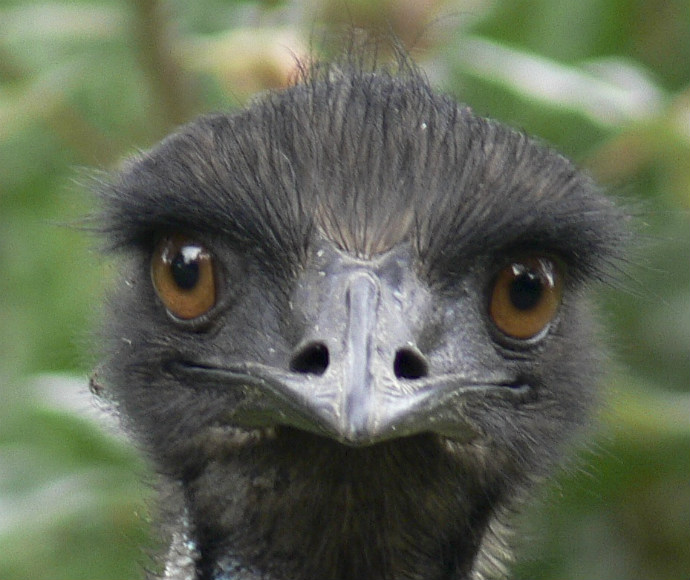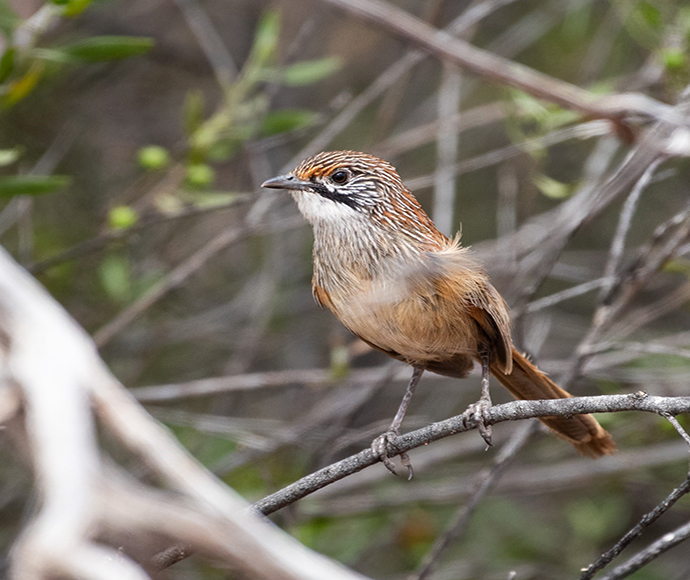Science is incorporated into almost every aspect of Saving our Species (SoS), including:
- program decisions
- Saving our Species conservation strategies
- the Saving our Species Key Threatening Processes Strategy
- research projects.
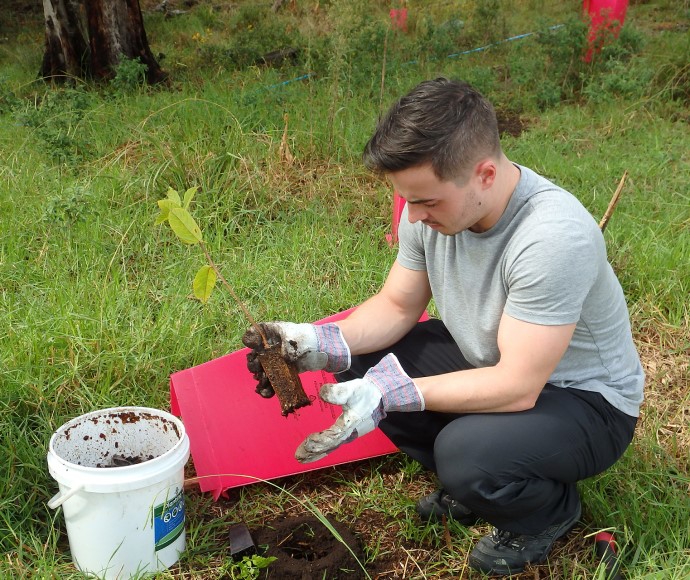
The Saving our Species program is underpinned by rigorous science
Science and research strategy
The Saving our Species Science and Research Strategy 2021 to 2026 provides a framework to guide effective and strategic delivery of science and research objectives under the Saving our Species program.
It ensures the SoS program is underpinned by rigorous science and evidence that is credible, accessible and impactful.
Key goals of the strategy are to:
- build knowledge
- ensure scientific rigour
- integrate outcomes.
Read the strategy
Go to the Saving our Species science and research strategy 2021 to 2026.
The strategy has been summarised as the Science and research strategy: plan on a page 2021 to 2026.
Drivers and actions
Science and research are integral to the SoS program. The priority actions in this strategy aim to maximise opportunities for new and innovative research and engage with partners and communities to deliver research that ensures:
- collaboration with end-users
- incorporation of traditional ecological knowledge and Aboriginal outcomes
- coordinated delivery of the program
- translation of research into on-ground actions.
Find out about our Research Needs Catalogue.
Research projects
The aim of Saving our Species research projects is to:
- build our knowledge about threatened plants, animals, fungi and ecological communities and their threats
- inform on-ground management for the conservation of these species and communities.
Our research projects often involve partners such as universities, other government agencies, botanic gardens, private industry, and Aboriginal and community organisations.
We currently support the following research projects.
New South Wales is home to over 30 species of Zieria shrubs, many of which are rare and threatened. There is still very limited knowledge about the ecology and life history of these threatened Zieria, which is needed to inform their effective conservation.
This project aims to improve our understanding of the impacts of fire on threatened Zieria species and build our knowledge of various aspects of Zieria seed ecology, including germination and seed bank longevity.
The project also aims to connect with Aboriginal knowledge holders to include cultural needs in Zieria conservation.
This project is being delivered by Science and Insights researchers in partnership with the University of New South Wales and the Australian Plant Bank at the Botanic Gardens of Sydney.
Phytophthora cinnamomi is a soil-borne pathogen that causes dieback in susceptible native trees and shrubs, including the endangered Sydney bush pea, Somersby mint bush and the critically endangered Cumberland Plain shale woodlands.
Infection by P. cinnamomi is a key threatening process under state and federal legislation, and the 2021 State of the Environment Report lists Phytophthora as having the second biggest impact on endangered species after rabbits.
Phytophthora is spread through the movement of infected soil, storm water run-off, vehicles and humans. Once present at a site, there is no way to remove it.
So how do we stop it? Conservation detection dogs have been successfully trained to sniff out Phytophthora in soil and in materials associated with regeneration and rehabilitation projects, such as nursery stock. This project is exploring how trained dogs can be used for the rapid detection of Phytophthora to prevent it spreading into unaffected areas.
This project is being delivered by Saving our Species in partnership with TATE Animals and Apex Canines, the University of Sydney and Northern Beaches Council.
The 2019 fires impacted large areas of the NSW north coast, burning over 50% of the known habitat for vulnerable macropods, including the:
- parma wallaby (Macropus parma)
- red-legged pademelon (Thylogale stigmatica)
- long-nosed potoroo (Potorous tridactylus).
The response of these species to fire is unknown. Post-fire, they are particularly vulnerable to predation by introduced predators such as wild dogs, foxes and cats, and loss of habitat and food resources. This puts their populations at risk of severe decline or even extinction.
This project will improve our understanding of how parma wallaby, red-legged pademelon and long-nosed potoroo are affected by fire severity and predation, as well as determine whether their populations are recovering following the 2019–20 fires.
This project is being delivered by Saving our Species in partnership with the North Coast Branch of the NSW National Parks and Wildlife Service.
In arid environments, a lot of small mammals, reptiles and ground-dwelling birds follow a ‘boom and bust’ strategy to cope with changing environmental conditions and events such as fire or drought.
These species can breed quickly in periods with ample resources – this is the boom and is typically associated with periods of above-average rainfall. They can then diminish during leaner times – this is the bust and is typically associated with extended dry periods.
During a bust period, safe areas of habitat known as ‘greenspots’ provide food, shelter and nesting and are vital to the survival of these species.
This project is investigating how greenspots function and support wildlife during bust periods. It will help inform the conservation management for many arid zone threatened species, including the:
- eastern fat-tailed gecko (Diplodactylus platyurus)
- dusky hopping-mouse (Notomys fuscus)
- stripe-faced dunnart (Sminthopsis macroura).
This project is being delivered by Saving our Species researchers in partnership with the University of Sydney.
Managing threatened species, communities and key threats in a project site that covers 89,933 hectares of diverse topography and vegetation is challenging, expensive and time consuming.
Many of the species in the project site, which includes Barrington Tops National Park, Mount Royal National Park and the Barrington Tops State Conservation Area, are also elusive and difficult to monitor.
This project will use a new survey technique to help overcome some of these challenges. All organisms shed DNA or remnants of DNA into the environment, so-called environmental DNA (eDNA). The project will use DNA extracted from water samples to identify species present in a survey area.
This project will put the validity of eDNA to the test by showing how eDNA can help manage complex monitoring sites and species in an affordable and effective way.
Some of the threatened species being targeted for monitoring through this project include the:
- spotted-tailed quoll (Dasyurus maculatus)
- long-nosed potoroo (Potorous tridactylus)
- Davies’ tree frog (Litoria daviesae)
- broad-toothed rat (Mastacomys fuscus)
- Hastings River mouse (Pseudomys oralis).
This project is being delivered by Saving our Species scientists in partnership with the NSW National Parks and Wildlife Service.
The western pygmy possum (Cercartetus concinnus) is a small threatened nocturnal marsupial with a patchy distribution in New South Wales.
Low population numbers in areas of apparently suitable habitat suggest that this species may be affected by the availability of critical resources like nesting sites. In the mallee region of far south-western New South Wales, these resources are influenced by time-since-fire and rainfall.
This project will install nest boxes at sites of different stages of post-fire regeneration to look at whether:
- western pygmy possums use nest boxes
- more possums are detected during years of below-average rainfall
- the nest boxes are used to rear young.
The project is expected to provide threatened species managers with an effective and efficient monitoring strategy for the species.
This project is being delivered by Saving our Species researchers in partnership with the NSW National Parks and Wildlife Service.
Lane Cove Bushland Park is home to a unique community of over 20 critically endangered fungi species in the Hygrophoraceae family. This waxcap mushrooms community is important because it contains decomposing fungi – a crucial component of the larger ecosystem, as it helps the growth of plant roots and provides food for a range of native animals.
Threatened species experts need to have a basic understanding of the fungi to identify them and help maintain the diversity and habitat of the community. Identification of the fungi has been based on physical characteristics using field identification that requires specialist expertise and skills – but results are often confusing and inconclusive.
So how do we improve the accuracy of fungi identification? This project will develop a reference collection, or biobank, that pairs physical characteristics with DNA sequencing to support future identification and classification of this fungi community. The project will also confirm the identification of existing fungi based on DNA analysis, help in future identification of waxcap mushrooms and identify gaps in our current knowledge.
This project is being delivered by Saving our Species researchers in partnership with the NSW Mycology Herbarium and Western Sydney University.
Read more about the Hygrocybeae Community of Lane Cove Bushland Park in the Sydney Basin Bioregion.
Research is underway to help save 3 critically endangered native orchid species that only exist in the Central Coast and Lake Macquarie regions:
- variable midge orchid (Genoplesium insigne)
- Corunastylis sp. Charmhaven
- Wyong sun orchid (Thelymitra adorata).
Little is known about the ecology of these rare orchids, including the pollinators that play an essential role in their life cycle.
This project will identity pollinator species and how often they visit each orchid species. The research will inform a translocation plan to ensure reproductive success at translocation sites as well as contribute to the long-term survival of the orchids in the wild.
This project is being undertaken by Saving our Species researchers in partnership with the University of Sydney, Invertebrates Australia, Ecoplanning and various private and public landholders.
Bats are important because they provide key ecosystem services like pollination, seed dispersal and regulation of insect populations. In particular, microbats consume large numbers of insects, eating well over half their own bodyweight each night. Many of these insects are human pests like mosquitoes, or significant agricultural pests.
This project will investigate the use of artificial intelligence to automatically and efficiently identify full-spectrum bat calls. We believe this will improve the accuracy of bat call detection.
It will also remove some of the financial barriers associated with manual call identification associated with one of the most common surveys for microbats – passive call detection and identification. This survey tool currently guides threatened bat conservation actions across New South Wales and is relied on by ecological consultants to complete environmental impact assessments.
This pilot study will demonstrate the feasibility of using artificial intelligence to identify bat calls. It will potentially benefit many threatened microbat species, including the:
- eastern coastal free-tailed bat (Micronomous norfolkensis)
- large-eared pied bat (Chalinolobus dwyeri)
- large bent-winged bat (Miniopterus orianae oceanensis)
- southern myotis (Myotis macropus).
This project is delivered by Saving our Species researchers in partnership with the Forest Science Unit, NSW Department of Primary Industries and Regional Development, and the Arthur Rylah Institute in Victoria’s Department of Environment, Land, Water and Planning.
Read more about Bat calls of New South Wales.
Persoonia hindii is a geographically restricted threatened shrub on the Newnes Plateau near Lithgow. Its distribution area has been repeatedly burnt and was entirely impacted by the ‘black summer’ bushfires of 2019–20.
Persoonia hindii is also threatened by:
- expansion of mining on the Newnes Plateau
- its narrow high-elevation niche habitat, which makes it vulnerable to climate change.
The species is also vulnerable to extinction due to its small population size and lack of genetic diversity.
This project will build an understanding of the genetic diversity within the current Persoonia hindii population. This work will be critical to informing future management actions for this species, including translocation and genetic rescue actions to carefully introduce genetic diversity. It is hoped that the findings will be of relevance to other plant species not suitable to conventional seed banking.
This project is being delivered by Saving our Species researchers in partnership with Hawkesbury Institute for the Environment, Western Sydney University, the Evolution and Ecology Research Centre, University of New South Wales, Australian PlantBank and the Royal Botanic Gardens and Domain Trust.
The Australasian bittern (Botaurus poiciloptilus) is endangered throughout Australia, with the total population estimated at 1,300 individuals.
The Australasian bittern relies heavily on wetlands to provide nesting and feeding resources over the spring–summer breeding period. The main cause of the decline of this species is the reduction in extent and quality of this critical wetland habitat. This is caused by changed water regimes, which is listed as a key threatening process for this species.
Saving our Species researchers are partnering with the Department of Climate Change, Energy, the Environment and Water's Environmental Water to better understand the role of environmental water delivery in securing breeding habitat for the Australasian bittern in natural wetlands.
The study will evaluate the effect of the timing, duration, depth, volume and extent of environmental watering flows on bittern breeding and, for the first time, define the environmental watering regimes required to support breeding Australasian bitterns in New South Wales.
Fox control is an integral part of many Saving our Species projects, including projects to save the iconic malleefowl and plains-wanderer.
To adaptively manage these species, we must be able to assess how efficient our fox control is. Fox numbers in an area are determined by monitoring with cameras and then using statistical methods to estimate abundance. These statistical methods rely on the assumption that data captured by each camera is independent, but this assumption has not yet been tested.
This project will use emerging long-range (LoRa) wireless technology and Bluetooth tracking tags to test the statistical methods used to assess fox abundance from camera trap data.
The LoRa and Bluetooth systems were developed to track cattle. They are cheaper than satellite trackers but operate in the same way. LoRa data is collected continuously from fixed and mobile receivers, and Bluetooth data is collected continuously from Bluetooth receivers fitted to cameras.
This new technology will provide 2 independent methods to assess the frequency with which foxes approach cameras in the monitoring period and will individually identify foxes captured on camera.
The results will allow us to assess if the assumptions underlying fox abundance models are correct and therefore can reliably inform management decisions.
The coastal emu is genetically distinct from other Australian emus and is listed as an endangered population. Fewer than 40 birds are estimated to remain in the wild.
Coastal emus were once widespread across north-east New South Wales but are now restricted to coastal farmland, open heath, and lightly wooded coastal forests between Evans Head and Redrock. A small, isolated population also exists in the Bungawalbin area.
Emus differ from most other bird species because:
- they do not form social groups or monogamous mating pairs
- male emus provide the primary care, incubating the eggs and raising the chicks.
But there are gaps in our scientific knowledge about key aspects of emu ecology and biology in the wild. We also have limited information on the low number of coastal emus that remain across the north coast.
Major threats to this population include predation of eggs and small chicks by feral pigs and wild dogs, and road strike of adults and offspring. Inappropriate fencing can also inhibit movement of emus across the landscape and exacerbate the threat of vehicle collision. Recruitment of sub-adult birds into the population is very low, which is limiting natural recovery. Events such as wildfire also threaten the population due to its very small size.
This project will build on existing Saving our Species recovery actions by gaining a better understanding of coastal emu ecology and biology to inform the future conservation of this endangered population.
The Hunter and Port Stephens estuaries are key biodiversity areas and are listed under the Ramsar Convention on Wetlands of International Importance due to their importance to migratory shorebird conservation. Yet shorebird populations are declining disproportionately in this region compared to other Australian shorebird sites.
One possible explanation for this decline is that birds in this region are continually disturbed by foxes over winter, causing them to lose condition before their long northward migration. This loss of condition may result in a higher death rate in individuals that would otherwise return to these estuaries each year.
This research project will combine camera trapping, ground surveys, GPS tracking, and environmental DNA scat analyses to identify the impact of foxes on high tide shorebird roosts.
This project is embedded in a larger project funded by Hunter Local Land Services, which is studying a range of threatening processes faced by Hunter and Port Stephens migratory shorebirds. Findings from this project will support an evidence-based approach to fox management within and around areas occupied by roosting shorebirds in the Hunter region and nationally.
The mukarrthippi striated grasswren (Amytornis striatus striatus) is currently known to exist in 2 locations in spinifex-dominated mallee, including a single dune within Yathong Nature Reserve.
Little is known about the habitat requirements of this extremely rare subspecies, and understanding these needs is critical to identifying and mitigating the threats driving the species towards extinction.
This research will address this knowledge gap by surveying known and potential habitat for individuals and broadcasting grasswren vocalisations, followed by a 5-minute listening period for responses.
Learning more about the habitat and distribution of this rare bird will inform strategic surveys to potentially locate additional populations and develop conservation management actions.
The project will also provide valuable data to inform the conservation and management of threatened mallee species within the nationally endangered mallee bird community of the Murray Darling Depression Bioregion at Yathong.
Contact us
Saving our Species Program
Email: [email protected]
Stay in touch
- Subscribe to the Saving our Species newsletter.
- Follow us on Facebook, Instagram, YouTube, LinkedIn or X.
- Search the Public register of Saving our Species conservation strategies
